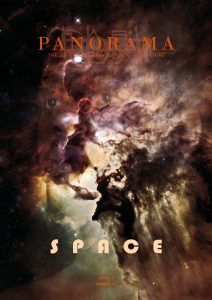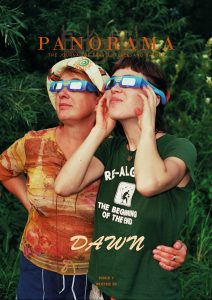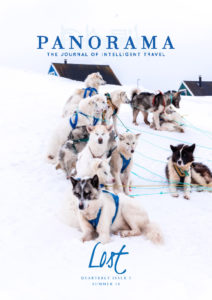“Why not go on an epic trip around the world instead?” a friend suggested. “When will you have this chance again?”
But this was a different kind of break, one catalyzed by loss, aggravated by work, and prescribed by therapy. So I pressed pause on my career in Singapore. During this time, I had no desire to tick new adventures off a bucket list. Instead, I gravitated towards places that offered a slower, gentler pace of travel. There would be fewer things to see and do, and my days were in danger of being unremarkable, but there was proximity to family and friends, to people I knew and who knew me. That year I sought a connection to the familiar, and the places I went to were as comfortable as home. I even limited myself to countries where I didn’t need to apply for a visa. During this gap year, there would be no friction with the foreign, no cultural confrontations whatsoever.
Bacolod is not exactly home. My family is from a different part of the Philippines and I am Manila-born and bred. But a disproportionate number of people in my life are from this city. My favorite English Lit teacher. Other Filipino expats who became family away from home. My dear friend Therese, whom I’d known since college, was born there and maintains ties. She can be relied upon for stories, sometimes from personal memory rather than history, of the town’s life and lore, and my itinerary was shaped around the stories she told me.
One tale that had long captured my imagination was the one about the Republic of Negros. It’s a little-known blip in Philippine history when Negrense sugar planters revolted against the Spanish and, for three months, became their own country. At one family reunion, an uncle distributed t-shirts emblazoned with the revolutionary flag, a sort of wistful half-joke. I liked the romantic idea of an independent island-state smack in the middle of the archipelago. So one morning, Therese and I toured Silay, one of the heritage towns where sugar planters lived and planned their revolt.
We stood outside one ancestral home as the sun beat down on the narrow asphalt street, Therese calling in Ilonggo through a rusted wrought-iron gate to ask if they were open to visitors that day. The front lawn was untrimmed, but the house was still a large stately thing, its second floor wrapped in windows made from capiz, translucent oyster shells harvested in the waters surrounding Negros Island. Sugar was a source of great wealth for plantation owners since the Philippines started exporting it in the 1750s. They managed to weather every kind of calamity for two centuries, until the 1970s when the perfect storm of a global crash in sugar prices, Martial Law corruption and financial mismanagement wiped everything out.
Silay was unnervingly still. There was no one on the streets, as if the town’s inhabitants, if they were even there, lived their entire lives indoors. In one home, this was actually true. Its last living inhabitant, an heiress already shielded from the world her entire life, became a recluse and removed her home’s second story, virtually closing herself off from the outside world.
On our way out of Silay, we drove past a concrete structure that glinted in the sun from a fresh coat of gray and blood-red paint. It looked more like a doll house than anything a human being would use. A cannon stood out front, aimed at nothing but the sky. The building was an anomaly among the filigreed wood homes around it. We were on Cinco de Noviembre Street and this was the marker for the Negros Revolution, the three-day revolt that gave sugar planters their own country. Stories have it that the revolutionaries scared the Spaniards off by marching up and down the plains carrying rifles carved out of palm fronds and cannons of rolled bamboo mats. But for reasons that go unexplained, the infant republic willingly became an American protectorate just three months later.
It was as if they never intended to become independent. Certainly, they never implemented their Constitution. This, I realized, was a war of last resort, the smallest possible disruption in order to keep the peace that maintained a long-standing way of life.
With Therese’s mom, Tita Sony, we then drove to Bago, a straight shot 40 kilometers south, to visit a sugarcane farm. The scenery changed slowly then all of a sudden: shopping malls and traffic jams gave way to suburban homes that gave way to ramshackle storefronts selling diesel and fertilizer then, turning onto an unpaved road, field upon sugarcane field in front of us, an unbroken view halted only by Mount Kanlaon on the horizon, an active volcano that marked the edge of the province.
After parking in the dirt driveway outside the community chapel, we were welcomed in short order by Culing, whom Therese had known since childhood, and her niece Vivian, who works in the Bago City treasurer’s office and helps Tita Sony with local matters. They ushered us into Vivian’s home, like most in the area built out of cement blocks and painted in cheerful pastel shades, where we all caught up over mounds of adobo and Vivian’s own take on paella.
Here were two people living a few doors down from each other who led divergent lives. Culing knew only the world of sugarcane. At the moment, she was being gently nudged into inter-cropping, the idea of planting other vegetables amidst the sugarcane stalks in a bid to diversify farm income. She pretended not to hear each time the topic was brought up. Vivian, on the other hand, was focused on raising children who would go on to get college degrees. Her elder daughter has just secured an internship overseas, and her younger son is computer-obsessed.
After lunch, we walked along rows of sugarcane, green thin strips that grew eight feet tall, through the barangay and down to the edge of the Bago River where local boys had brought their carabaos to cool down. The barangay lived between the stalks and the water. Here was a community. Everyone a farmer, someone in the household probably holding down two jobs, children playing in the neat front yards. At the elementary school, someone had hung up a banner congratulating Shellyn E. Gomez for graduating from the MBA program of a top national university. As we walked past the front yard of a cranky neighbor with angry dogs, Culing walked protectively beside Tita Sony.
Before we left, we unloaded boxes of Mingo Meals for both women, which they would distribute within the barangay. These little sachets made of rice, mung bean and moringa were instrumental in feeding programs for undernourished children. They were produced by the Negrense Volunteers for Change, a local charity I volunteered for. So, of course, I spent a day visiting with them.
At lunch, I met a lady who was on the charity’s management team. Over plates of callos, chatting and laughing about the unique challenges of running an under-resourced non-profit, she compared President Duterte to Singapore’s founding Prime Minister Lee Kuan Yew. It was such a surprising comparison, one I had never heard before. For someone to whom Singapore had been good, despite my current circumstance, it was also a jarring comparison, one I strongly objected to. Before I could catch myself, I responded with a strong argument about how they were two completely different leaders. I waxed lyrical about rule of law and a working government. She, in turn, was taken aback by how much offense I had taken. I stopped, tried to change the subject. We managed to move on by joining the rest of the table in conversation, but the drive back to the hotel, where she was dropping me off, was awkward.
There is a way to spend time in the Philippines without politics past and present creeping into your day: create a bubble and live in it. Spend time only with people you know, preferably with some background on where they stand on hot topics. Never bring up anything contentious and stay within the guardrails of a shared ideology.
I had met someone who supported the same charity; by definition, she and I had already chosen to fight for the same cause. This person had gone many steps further and made it her day job, which I respected. But because of my instinct to defend my view of the world, I had missed an opportunity to understand someone else’s. It was my chance to get out of my bubble, and I didn’t. With one sentence said differently, or just a slight shift in tone, we could now be allies, foot soldiers in the same war looking out at the same enemy, looking out for each other.











